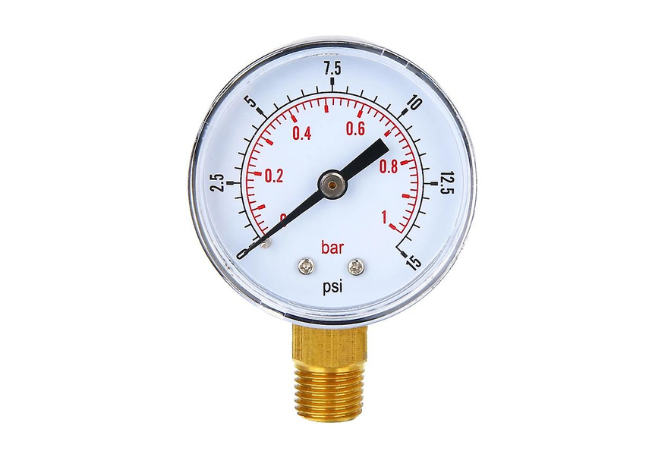What Are the Essential LED Lighting Components and Why Are They Vital for Efficient Lighting Systems?
Understanding the Importance of LED Lighting Components
LED lighting has revolutionised the lighting industry with its efficiency, durability, and versatility. At the heart of this lighting revolution are numerous essential LED lighting components, each playing a critical role in ensuring reliable performance. Whether you're an electronics enthusiast, professional installer, or simply curious about modern lighting solutions, comprehending the importance of these components can help you select the right products for your projects.
In this comprehensive guide, we explore key LED lighting components and highlight their roles in creating energy-efficient, high-quality lighting systems.
Essential Components of LED Lighting Systems
LED lighting systems are composed of various critical components, each ensuring optimal functionality and performance. Here's a breakdown of these essential components:
LED Chips and Modules
LED chips are the core of every LED lighting fixture. They emit light when an electric current passes through semiconductor materials.
- High efficiency: Converts electrical energy to light efficiently, reducing energy consumption.
- Compact size: Allows flexible design and installation in various lighting fixtures.
- Durability: Resilient against shock, vibration, and frequent switching.
LED modules, comprising multiple LED chips mounted on a printed circuit board (PCB), simplify installation and enhance reliability.
LED Drivers
LED drivers regulate electrical current, ensuring LED chips operate safely and efficiently.
- Current regulation: Protects LEDs from fluctuations in power supply.
- Longevity enhancement: Prevents overheating and extends LED lifespan.
- Dimming functionality: Enables adjustable brightness levels for various applications.
Heat Sinks and Thermal Management Solutions
Managing heat effectively is crucial for maintaining the lifespan and performance of LEDs.
- Effective heat dissipation: Prevents overheating, preserving LED efficiency and brightness.
- Material selection: Commonly made from aluminium, copper, or thermal pads for optimal heat transfer.
- Enhanced durability: Reduces the risk of premature failure due to overheating.
Optics and Diffusers
Optical components shape and direct LED light output, influencing visibility and visual comfort.
- Precise beam control: Directs light precisely to where it's needed, minimising glare.
- Uniform illumination: Diffusers evenly distribute light, creating pleasant ambient lighting.
- Enhanced visual comfort: Reduces eye strain and improves lighting quality in residential, commercial, and industrial spaces.
LED Holders and Connectors
Holders and connectors secure and facilitate electrical connections between LEDs and other components.
- Ease of installation: Simplifies assembly and maintenance.
- Secure connections: Ensures reliable electrical continuity, preventing failures.
- Compatibility: Supports various LED configurations and setups.
Power Supplies and Transformers
Power supplies and transformers convert mains electricity to suitable voltage levels required by LEDs.
- Voltage conversion: Adapts voltage to optimal LED operating requirements.
- Stable power delivery: Minimises electrical disturbances and maintains consistent lighting quality.
- Safety features: Incorporates protective mechanisms against voltage spikes and surges.
Advantages of High-Quality LED Lighting Components
Choosing quality LED components yields substantial benefits, enhancing lighting performance, energy efficiency, and cost savings.
- Improved energy efficiency: Reduces electricity consumption significantly, lowering operational costs.
- Longer lifespan: Reliable components extend the lighting system's longevity, minimising replacement frequency.
- Better environmental impact: LED components emit less heat and contain no toxic elements, reducing environmental harm.
- Lower maintenance costs: Durable components require minimal upkeep, offering substantial savings over time.
- Enhanced flexibility: Allows for customised lighting solutions tailored to diverse applications and design preferences.
Applications of LED Lighting Components Across Industries
LED lighting components have transformed multiple industries, delivering improved performance and versatility.
Residential Lighting
- Indoor illumination: Offers efficient, long-lasting lighting for kitchens, living spaces, and bedrooms.
- Outdoor applications: Enhances safety, security, and aesthetics with garden and landscape lighting.
Commercial and Retail Spaces
- Energy savings: Reduces operating costs significantly in offices, shopping malls, and retail outlets.
- Customizable aesthetics: Creates inviting environments that attract customers and enhance visual appeal.
Industrial Environments
- Reliable illumination: Withstands harsh conditions, offering dependable lighting in warehouses and manufacturing facilities.
- Increased safety: Bright, consistent illumination enhances visibility, reducing workplace hazards.
Automotive Industry
- Durable and efficient: Provides reliable illumination for vehicle headlights, indicators, and dashboard lighting.
- Enhanced visibility: Improves road safety and reduces driver fatigue.
Selecting the Right LED Lighting Components for Your Needs
Choosing suitable LED components is essential for achieving desired lighting outcomes. Consider these factors to make informed decisions:
- Purpose and application: Define your lighting requirements based on intended use and environmental conditions.
- Energy efficiency ratings: Opt for components with high energy efficiency to maximise cost savings.
- Compatibility: Ensure components work seamlessly together to deliver optimal performance.
- Quality standards: Select components from reputable manufacturers with strong warranties and certifications.
Future Trends and Innovations in LED Components
The LED industry continues evolving and is driven by innovation and technological advancements.
- Smart lighting integration: Increased use of IoT-enabled components allows remote control, automation, and real-time monitoring.
- Enhanced efficiency: Ongoing development of ultra-efficient LED chips reduces energy usage even further.
- Sustainable materials: Growing emphasis on eco-friendly, recyclable components supports environmental sustainability.
Conclusion: Why Prioritising Quality LED Components Matters
LED lighting components form the backbone of modern lighting solutions, significantly influencing performance, longevity, and efficiency. By investing in high-quality LED chips, drivers, heat sinks, and other vital components, you ensure superior lighting outcomes that deliver long-term benefits, including energy savings, reduced maintenance, and environmental sustainability.
Ultimately, understanding the importance and functionality of LED lighting components empowers you to select the best products for your projects, ensuring that your lighting systems perform optimally for years to come.




Comments
Post a Comment